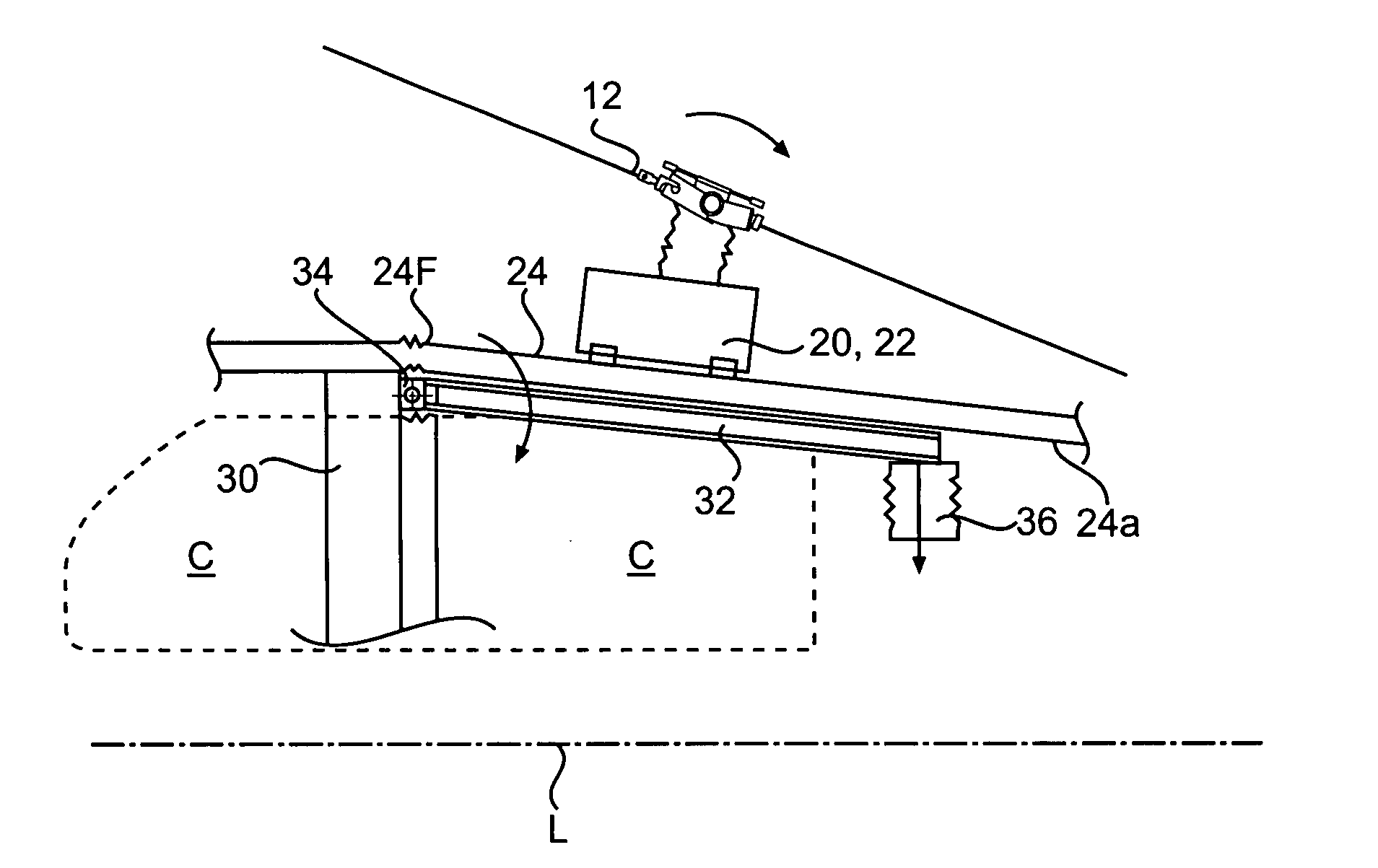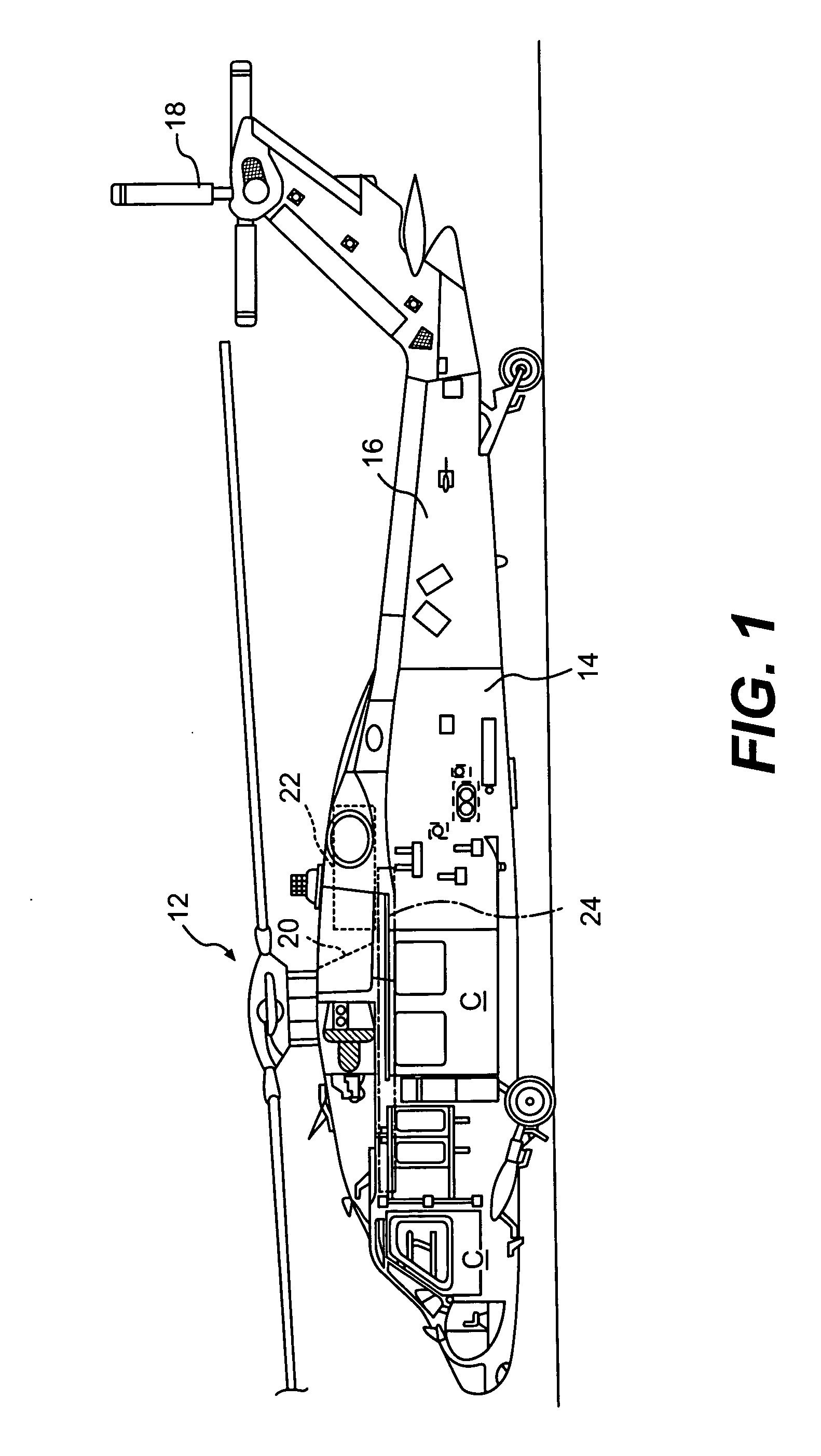Energy absorbing airframe for a vertical lift vehicle
a vertical lift vehicle and airframe technology, applied in the field of airframes, can solve the problems of difficult prediction, low efficiency of landing gear, and high mass, and achieve the effect of minimizing the likelihood that the rotor blades may penetrate the crew compartment and minimizing the potential
- Summary
- Abstract
- Description
- Claims
- Application Information
AI Technical Summary
Benefits of technology
Problems solved by technology
Method used
Image
Examples
Embodiment Construction
[0025]FIG. 1 schematically illustrates a rotary-wing aircraft 10 having a main rotor assembly 12. The aircraft 10 includes an airframe 14 having an extending tail 16 which mounts an anti-torque rotor 18. The main rotor assembly 12 is driven through a transmission (illustrated schematically at 20) by one or more engines 22.
[0026] The main rotor assembly 12, transmission 20 and the engines 22 are high mass systems mounted to an upper deck 24 (FIG. 2A) at mount locations 25 (FIG. 2B) which is located generally above a crew compartment C. It should be understood that “crew component” as utilized herein refers to both the cockpit and the passenger cabin but primarily to the cockpit. It should be understood that the term “upper deck’ as utilized herein may include a multiple of airframe structures which at least partially provide support the high mass components and which is located at least partially above the crew compartment C. Although a particular helicopter configuration is illustr...
PUM
 Login to View More
Login to View More Abstract
Description
Claims
Application Information
 Login to View More
Login to View More - R&D
- Intellectual Property
- Life Sciences
- Materials
- Tech Scout
- Unparalleled Data Quality
- Higher Quality Content
- 60% Fewer Hallucinations
Browse by: Latest US Patents, China's latest patents, Technical Efficacy Thesaurus, Application Domain, Technology Topic, Popular Technical Reports.
© 2025 PatSnap. All rights reserved.Legal|Privacy policy|Modern Slavery Act Transparency Statement|Sitemap|About US| Contact US: help@patsnap.com



